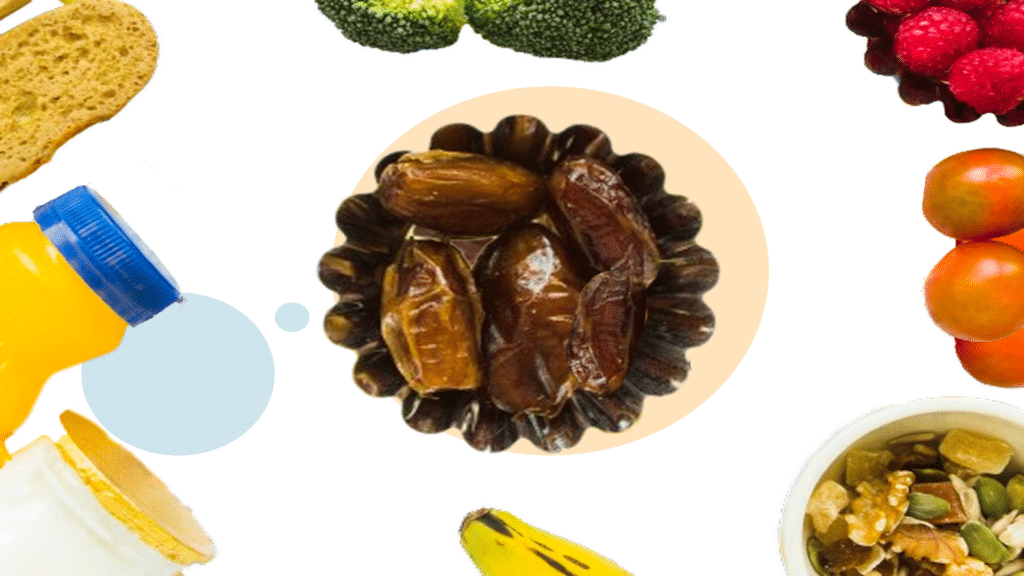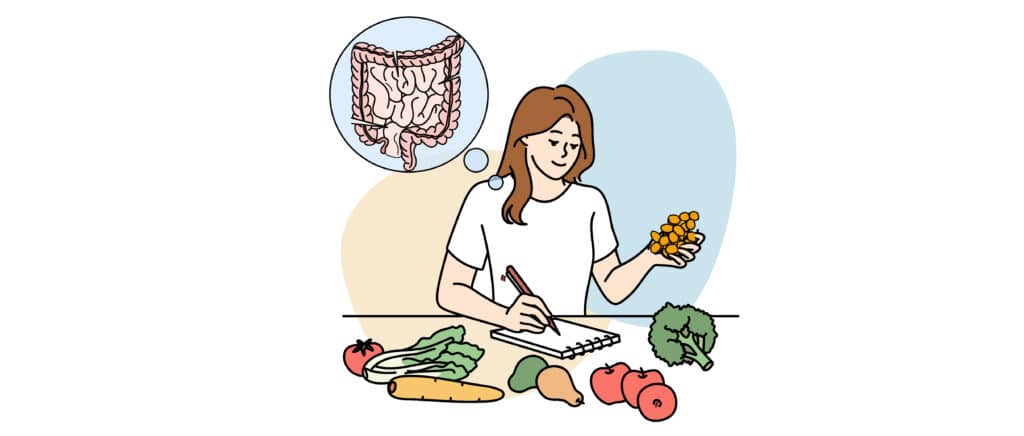All About American Diabetes Month
- The American Diabetes Month happens every November.
- It helps create more awareness around preventing, screening, and living with diabetes.
- Diabetes is a complex chronic disease that is largely influenced by lifestyle choices.
- Nutrition, exercise, stress, and medications play a powerful role in the management of diabetes.
- Do your part this year to support people living with diabetes and to educate yourself to prevent diabetes!
November is American Diabetes Month each year. This month is a great time to reflect and educate ourselves on diabetes. Diabetes is one of the leading chronic conditions in the US. CDC states that diabetes affects 1 in 10 Americans, while pre-diabetes affects 1 in 3 Americans! Many Americans – nearly 25% – don’t know that they are living with diabetes!
The complications of diabetes range from mild to quite serious. This is why the American Diabetes Month is a great opportunity to learn more about it. We can take advantage of the resources available to educate ourselves. We’ll also be able to get a head start on diabetes prevention. Let’s take charge of our health with quality diabetes management!
What is Diabetes?
Diabetes is a complex chronic disease. It occurs when the blood sugar is high and the body cannot regulate these levels back to the normal range. This happens due to a problem with insulin. This is a hormone that helps control your blood sugar levels. There are two main types of diabetes: type 1 and type 2 diabetes. Though they may sound similar, they are vastly different diseases.
Type 1 diabetes is an autoimmune disease. It occurs when the body attacks the insulin-producing beta cells in the pancreas. The decrease in insulin production in the body causes blood sugar levels to rise – potentially to dangerous levels. Type 1 diabetes is less common than Type 2 diabetes and is most often diagnosed earlier in life. People with Type 1 diabetes must take in insulin regularly to manage their blood sugar.
Type 2 diabetes is much more common in the US. About 9 in 10 cases of diabetes have this type. It is a lifestyle-mediated disease that is often the result of years of lifestyle choices that raise blood sugar. This is usually diagnosed in adults. However, it is rapidly developing in younger adults and children as well.
There is a special type of diabetes that develops in pregnant women. This is called gestational diabetes, and it usually disappears after the baby is born. However, it has several complications. The baby may be at higher risk for health problems. They are also more likely to develop type 2 diabetes later in life.
The symptoms of Type 1 and Type 2 diabetes are very similar. High blood sugar can cause increased thirst and urination. It may also lead to blurry vision, intense hunger, unintentional weight loss, fatigue, and lethargy.
Left untreated, these symptoms can cause serious complications. In fact, they are associated with many comorbidities like heart disease and chronic kidney disease (CKD). High blood sugar, when left untreated long term, causes damage to our nerve cells. This affects small nerve damage to tissues and can impact vision, hearing, and touch sensations.
People with Type 2 diabetes may need to make lifestyle changes. They may need to consider taking medications for lowering blood glucose. We recommend that these people talk to their physician. This is because they might also need a combination of both to manage their diabetes.
Diabetes Prevention
You might have not been diagnosed with diabetes. In that case, you might be wondering… What can you do to prevent diabetes? What are the different ways you can take to avoid it?
Chronic diseases like diabetes are largely influenced by lifestyle choices. Therefore, nutrition, exercise, stress, and medications play a powerful role in managing diabetes. There are specific steps you can take to change your lifestyle. This will help improve your blood sugar too. This is true whether you have diabetes or you want to prevent it!
Let’s zoom out and talk about how diabetes develops overtime. Diabetes may take years, even decades, to develop. Thus, depending on our lifestyle, our blood sugar might be slowly rising year after year. Insulin, an essential hormone in our pancreas, is released when our blood sugar rises. This is the normal response. However, sometimes our bodies stop responding well to insulin. We call this phenomenon insulin resistance. It is a precursor to developing prediabetes and diabetes. The cause of insulin resistance isn’t fully understood. Researchers believe weight and physical activity are large factors.
There has been a rising trend of prediabetes in American children. Prediabetes occurs when blood glucose has started to rise above normal levels. However, these levels are not high enough to be diagnosed with diabetes. People with prediabetes can still show symptoms of diabetes. They might even have complications associated with diabetes. This trend is alarming because the earlier they develop the disease, the more prone they are to get the complications. Younger people are developing life-threatening diseases already.
Key Lifestyle Changes to Make
You are probably wondering how to prevent developing diabetes. Or maybe you are trying to find ways to better manage your diabetes. In that case, the lifestyle changes needed will be the same! There are four major areas of a healthy lifestyle that need to be reviewed for diabetes. They are your diet, exercise, stress, and medications.
Change your Diet
Diet changes for diabetes are unique. This means they need to be individualized to your lifestyle! However, there are some commonalities that anyone can implement.
- Fill half your plate with colorful vegetables.
- Choose lean proteins like chicken, fish, and pork.
- Opt for the plate method – a way to portion size without excessive measuring!
- Choose low glycemic fruits- such as dates!
- Try only getting half of your needed calories from carbohydrates
- Choose high fiber, complex carbohydrates first.
- Prioritize heart healthy fats like olive oil, avocados, and nuts!
Exercise Regularly
Exercise is impactful on blood sugar for a variety of reasons. It helps lower your blood sugar. It also increases your metabolism. This means that your body can burn more calories while exercising and even while sitting down! This will eventually help with sustainable weight loss. It will be easier for you to keep the weight off too.
Consider the recommendations for physical activity below from the American Diabetes Association:
- Work on getting 150 minutes of moderate-intensity physical activity per week
- Focus on strength training 2 days per week
- Get up from your desk every 30 minutes
Take Time to Relax and Unwind
Chronic stress plays a strong role in diabetes risk. This is because stress raises your blood sugar and blood pressure. In the long term, elevated stress levels can all contribute to diabetes risk. There may be several sources for this. These include work, home life, mental health concerns, or poor sleep quality.
Taking some time to relax and unwind is vital to your health! Consider some ways you can work on stress management:
- Sleep at least 8 hours per night
- Go for a walk in your down time
- Turn off the TV at night and read
- Spent time with friends and family
Talk to Your Doctor
There are many medications on the market that can help prevent or treat diabetes. Alternatively, you may just need to make some changes in your lifestyle. We recommend having your blood sugar checked at least once a year. This is to make sure you haven’t developed it yet. It will also help prevent you from developing it too. Talk to your doctor about which option is right for you.
There are new devices called continuous glucose monitors (CGMs). They read blood sugar throughout the day and connect to a smartphone. CGMs help people with diabetes make decisions in real time. It will help them with their lifestyle choices and blood sugar management.
November is American Diabetes Month. This is the perfect time to educate yourself about this chronic disease. You might be interested in taking advantage of the resources that are available to manage your blood sugar! Check out our tips to get involved now!
How to get involved for American Diabetes Month:
- Support your loved ones with diabetes.
- Take advantage of diabetes education and resources.
- Complete a risk assessment to find out your likelihood of developing diabetes.
- Adopt a healthy habit as part of your lifestyle change.
Summary
Diabetes is a leading chronic disease in America. However, many Americans do not even know they are at risk or already have diabetes. November is American Diabetes Month. This is the perfect time to educate yourself about this chronic disease. There are various ways to prevent or manage this disease. This includes changing your diet and exercising regularly. It is also a good idea to take some time to relax and unwind. Finally, the best way is to talk to your doctor.
Scientific Information
- Diabetes – A complex chronic disease that is largely influenced by lifestyle choices; nutrition, exercise, stress, and medications play a powerful role in the management of diabetes.
- Insulin – A hormone that helps our body absorb and utilize blood sugar for energy.
- Insulin resistance – This phenomenon occurs when our body is overproducing insulin to keep blood sugar within normal limits. Although blood sugar appears normal, insulin levels in the body are high – a precursor to developing diabetes.
- Complications – Ranging from mild to severe, complications of diabetes include heart disease, chronic kidney disease, stroke, and nerve damage.
- Pre-diabetes – A sign that blood sugar is elevated, and you are at high risk for developing diabetes.
- CGM (Continuous Glucose Monitors) – Read blood sugar throughout the day and connect to a smartphone. CGMs help people with diabetes make decisions in real time about their lifestyle choices and blood sugar management.









